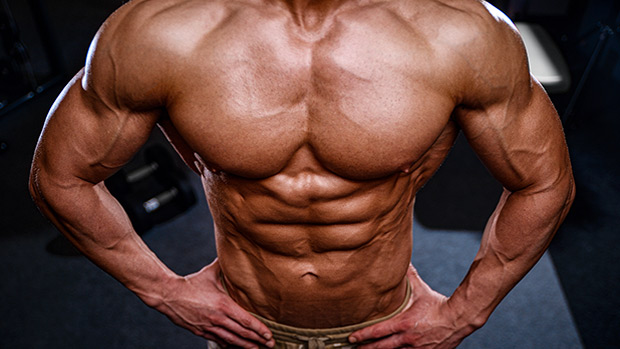Here's what we already know about muscle growth:
- You can build muscle doing anywhere between 3-30 reps.
- The 6-20 range is probably where you'll get the most growth.
- You can't out-volume intensity. Your sets have to be hard to be effective. The sweet spot seems to be between having 4 reps in reserve (RIR) and training to failure.
- Some level of variety is needed over time to overcome adaptive resistance.
- Progressive overload is vital for long-term increases in muscle mass. (But most people don't understand how to apply progressive overload to create size increases.)
- Training volume has a dose-dependent relationship with hypertrophy/growth.
Those guidelines are useful, but they leave quite a lot of variation in training style. One of the problems with determining what works best for hypertrophy is that, unlike strength or power, muscle growth isn't a specific performance adaptation. It's a structural change in response to a training stimulus.
Various mechanisms can elicit a hypertrophic stimulus. This is why so many different methods can work and why so many warring camps argue about the best way to get jacked.
You've probably seen arguments from the intensity camp, the high-volume crew, and the progressive overload gang. They all squabble online. Rather than arguing which way is best, they'd be better off accepting that all these different methods work, but none of them work forever.
So what's the best answer?
Find a way to leverage the benefits of each. To take advantage of the different training methods and maximize muscularity, provide a varied stimulus that exploits all the growth mechanisms over time.
Once you understand this, you can figure out how to combine or sequence different strategies to build muscle faster. Exactly how to do this – and how to optimally sequence these training variations in a periodized fashion – is the tricky part.
Periodization is a well-established way to optimize performance outcomes like strength, speed, or power. Research on it for hypertrophy, however, has been fairly limited and inconclusive. This is starting to change, though, and a recent study provides us with some very interesting findings (1).
After a three-week pre-study hypertrophy protocol, the researchers divided the participants into two groups: hypertrophy and strength-hypertrophy.
- The hypertrophy or "bodybuilding" group worked out for 8 weeks using 4 sets of 8-12 reps with 1 minute rest in between sets.
- The strength-hypertrophy group worked out for 3 weeks doing 1-3 reps with 3 minutes rest between sets (strength-focused), then they switched to the hypertrophy/bodybuilding program for the remaining 5 weeks.
At the end of the 8-week study, the strength-hypertrophy group gained significantly more strength and muscle.
Given the 3-week pre-study protocol, the study actually had a constant hypertrophy group of 11 weeks versus a strength-hypertrophy group that did 3 weeks of hypertrophy, 3 weeks strength, and 5 weeks hypertrophy.
This study shows that alternating strength and hypertrophy is superior for building muscle than just constantly training using conventional bodybuilding methods.
The authors provided two possible explanations for the enhanced gains in the group that alternated between strength and size training:
- Reason 1: Using heavier loads increases tension on the muscle fibers and thereby stimulates more muscle growth.
- Reason 2: Relative tension increases muscle activation.
My interpretation is different, though, and it doesn't just have to do with strength and growth phases. It has to do with volume cycling.
I think gaining strength and skill on key movement patterns allows higher levels of mechanical tension to create the potential for superior training quality and loading in the subsequent hypertrophy phases.
Intuitively, this makes sense. If you're stronger, you can lift more, which places more tension across muscle fibers.
Another factor that wasn't really analyzed is the undulations in training volume. The results indicate that volume-cycling might be a very good strategy for muscle gain.
I'd say the strength gains, volume cycling, and tension-based factors all contributed. And if you want to maximize your gains, you should use these in your own training.

Here's one way to approach your training when you want to pack on size:
- Prime: This is a moderate-volume phase that hones your technique, builds strength on key movement patterns, achieves structural balance, and fixes weak links.
- Build: This is a progressively higher-volume training phase lasting 12-16 weeks.
- Strengthen: This is a low-volume block that increases your strength and reduces overall fatigue to resensitize you to higher volumes.
Let's break those down:
This is a moderate-volume phase. The workouts begin by training you for strength in the key lifts, similar to the study. Do these exercises with lower rep ranges (3-5 reps per set), focusing on developing skill and technique to build and display strength on these lifts.
Use perfect form for more sets. Don't train all the way to failure. This is ideal for skill acquisition and creating solid motor patterns. Later you can load them heavily and push yourself closer to failure in the "build" phase.
For the rest of each session, focus on exercises to develop structural balance and fix weak links. Use the more traditional hypertrophy rep range of 8-12 reps and take each set closer to failure.
This priming phase lays the groundwork for the building phase to follow. It's like putting the foundations in place before you begin building your new house.
The first part of this building process is a low-volume, high-intensity training phase. By high-intensity, I don't mean the traditional sports-science definition of using a high percentage of your one-rep max. I mean a high relative intensity. "Relative intensity" is a metric of effort. It's measured in reps in reserve (RIR) and describes how close to failure you are.
The focus of this phase is being able to push sets hard and work to (or very close to) failure with perfect form while keeping the target muscle under tension. Avoid the temptation to adjust your form to shift tension away from the target muscle. This is a key skill to develop if you want to become as big as possible.
The target muscle must be the limiting factor. This phase is all about developing the skill and mental strength to work through the muscular discomfort you feel when fatigue kicks in and keep grinding out growth-stimulating reps with perfect form.
The mindset is to get the most from the least. You'll take a "minimum effective dose" approach to training volume. This is brilliant because it teaches you to focus. If you know you've only got a few sets for a given muscle within a workout, you make sure to get the most out of those sets. Every set is a growth opportunity, and every rep is a moment of personal accountability.
The other huge benefit? It opens up a massive window of opportunity to use volume as a driver of hypertrophy and keep progressing for the next 9 to 12 (maybe even 15) weeks.
Research indicates that training volume has a dose-response relationship with hypertrophy. The more hard sets you do (without exceeding your capacity to recover), the more muscle you build.
These first few weeks of the build phase create a longer runway to use volume as a means of hypertrophy. If you can grow by using only a handful of sets for a muscle, it'll create the opportunity to explode over the next 12 to 16 weeks.
In the second part of this phase, gradually ramp up volume as a pathway for growth. Driving volume up simply by focusing on doing more hard sets creates an increase in mechanical tension. This could also be described as "progressive tension overload." Progressing in this fashion is extremely effective for anywhere between 6 to 10 weeks.
But after this period, more volume eventually starts to have diminishing returns. Adaptive resistance begins to set in, and your rate of progress slows. To fix this, pivot and use a different pathway to drive further gains.
Use metabolic stress training methods (drop sets, etc.). Challenging yourself using a different hypertrophy mechanism works extremely well to squeeze out every last bit of muscle-building potential. This phase should be brutal, and it takes guts and mental toughness to get the most from it. It's a kind of overreaching phase before you back off.
Reduce volume and do a traditional strength-training phase. This strength block allows you to solidify the gains you've made so far. It'll also resensitize you to the benefits of high-volume training, so when you return to that style of lifting, you'll get enhanced results.
During this phase, you'll retain the muscle you've built. This will set you up perfectly for the next phase, whether that's a cut or another round of prime/build/strengthen.
For long-term size gains, use a variety of methods. This variation should be strategic. If sequenced intelligently, one phase can act as a launchpad for the next. That way, the training stimulus at each point represents an overload that forces the body to adapt and grow bigger, stronger muscles.
If done correctly, you can use this approach cyclically, where you work through the process, one phase at a time, and gradually become bigger and stronger.
You can't just add load to the bar, do more volume, and train to failure all year round. But you can take the best of these methods and use them in a sequential fashion to build your best body ever.
- Carvalho L et al. Is stronger better? Influence of a strength phase followed by a hypertrophy phase on muscular adaptations in resistance-trained men. Res Sports Med. 2021 Nov-Dec;29(6):536-546. PubMed.





